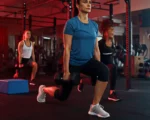Ever dreamed of gliding across the ocean, feeling the freedom of the waves beneath you? Surfing is an exciting sport that combines physical challenge with pure joy and connection to the water. Starting your surfing journey may seem daunting, but with the right guidance, anyone can learn to ride the waves. Here’s a step-by-step guide tailored for beginner surfers, water sports enthusiasts, and adventure travelers who are ready to take the plunge.
What is Surfing?
Surfing is the art of riding waves on a board, propelled by the ocean’s energy. It’s a sport deeply rooted in tradition, culture, and a love for the ocean, attracting adventurers around the world. Whether you’re chasing the thrill of riding towering waves or enjoying small, beginner-friendly swells, surfing has something for everyone.
Benefits of Surfing
Before we get started, it’s worth noting the incredible physical and mental benefits surfing offers:
- Fitness and Strength: Surfing builds cardiovascular endurance, muscle strength, and flexibility.
- Improved Balance: Riding waves requires excellent balance, which improves coordination and spatial awareness.
- Mental Clarity: Surfing is a meditative experience that connects you with nature, relieving stress and boosting happiness.
Now that you’re convinced, here’s everything you need to know about starting your surfing adventure.
Step 1: Prepare Yourself Physically
Surfing requires a good level of physical fitness. Start preparing your body with exercises that focus on strength, cardio, and balance.
Work on Balance
Balance is key to surfing, so start practicing at home:
- Invest in a balance board and spend a few minutes daily improving your stability.
- Yoga can also help improve core strength and flexibility, which are vital for surfing.
Stay Fit
Swimming is a fantastic way to build endurance and get comfortable in the water. If you’re nervous about big waves, working with a swim coach can help you build water confidence.
Adopt Healthy Habits
Fuel your body with a nutritious diet, stay hydrated, and ensure you get enough sleep. Avoid substances like alcohol that may hinder your physical performance and coordination.
Step 2: Learn the Basics at Surf School
Jumping straight into the ocean can feel overwhelming. That’s why surf schools are an excellent place to start. They offer invaluable guidance in a safe, controlled environment.
What You’ll Learn at Surf School
- How to Paddle and Stand: Master the mechanics of paddling and the «pop-up,» which is transitioning from lying on the board to standing.
- Safety Techniques: Learn how to fall off your board safely, manage wipeouts, and understand surf etiquette.
- Swimming & Breathing: For smooth surfing, proper swimming and controlled breathing techniques are essential.
Surf schools often include pool sessions or beginner-friendly wave simulations, allowing you to practice without the risks of an open ocean.
Step 3: Gear Up for Surfing
Having the right equipment is essential for a smooth start. Here’s what beginners need:
- Surfboard: Opt for a long, soft-top surfboard. These boards provide more stability and are much more forgiving than smaller, hard boards.
- Wetsuit: Depending on your surf spot’s water temperature, a wetsuit may be necessary to keep you warm and protect your skin.
- Leash: The leash keeps your board attached to you, so you’re not constantly chasing it after a wipeout.
- Wax: Use surfboard wax for a better grip on your board.
For your first session, rent gear from a local surf shop or school to experiment with different options before committing to a purchase.
Step 4: Practice in Beginner-Friendly Spots
Your first surf session should be in a spot with gentle waves and a safe, shallow environment. Look for “foamies,” which are broken waves that form close to shore and are perfect for beginners.
Tips for Your First Open-Water Session
- Observe Other Surfers: Spend 20–30 minutes studying how other surfers interact with the waves.
- Choose the Right Wave: Stick to small, soft waves and avoid crowded or advanced-level spots.
- Respect Surf Etiquette:
-
-
- Only one surfer rides a wave at a time.
- Wait your turn, and don’t drop in on someone else’s wave.
- Avoid paddling through areas where surfers are riding waves.
-
Politeness and courtesy go a long way. Remember, the surf community values respect.
Step 5: Practice, Adjust, and Be Patient
Surfing has a steep learning curve, and it takes time to master the basics. Don’t be discouraged by falls or failed attempts. Every ride, wipeout, and wave is a learning experience.
Helpful Practices
- Spend time on dry land practicing your «pop-up» technique.
- Review your progress with an instructor or experienced surfer.
- Warm up before each session and cool down afterward to prevent injuries.
Celebrate small victories, like catching your first wave, and trust that improvement comes with consistent effort.
Step 6: Become Part of the Surf Community
Surfing isn’t just a sport; it’s a lifestyle. Being part of a community of surfers enriches your experience. Join local surf meet-ups, attend events, and engage with fellow enthusiasts.
Many surfing communities offer opportunities to learn about ocean conservation, sustainability, and ways to give back to the environment that makes this sport possible.
Final Thoughts
Starting your surfing adventure might feel like a challenge at first, but with preparation, practice, and patience, you’ll be catching waves in no time. Remember, the ocean is a playground of endless possibilities. Whether you’re riding foamies as a beginner or progressing to unbroken waves, every moment spent on a surfboard is one of growth, fun, and connection.
Are you ready to begin your surfing adventure? Share this guide, grab your board, and jump in. The waves are waiting!








